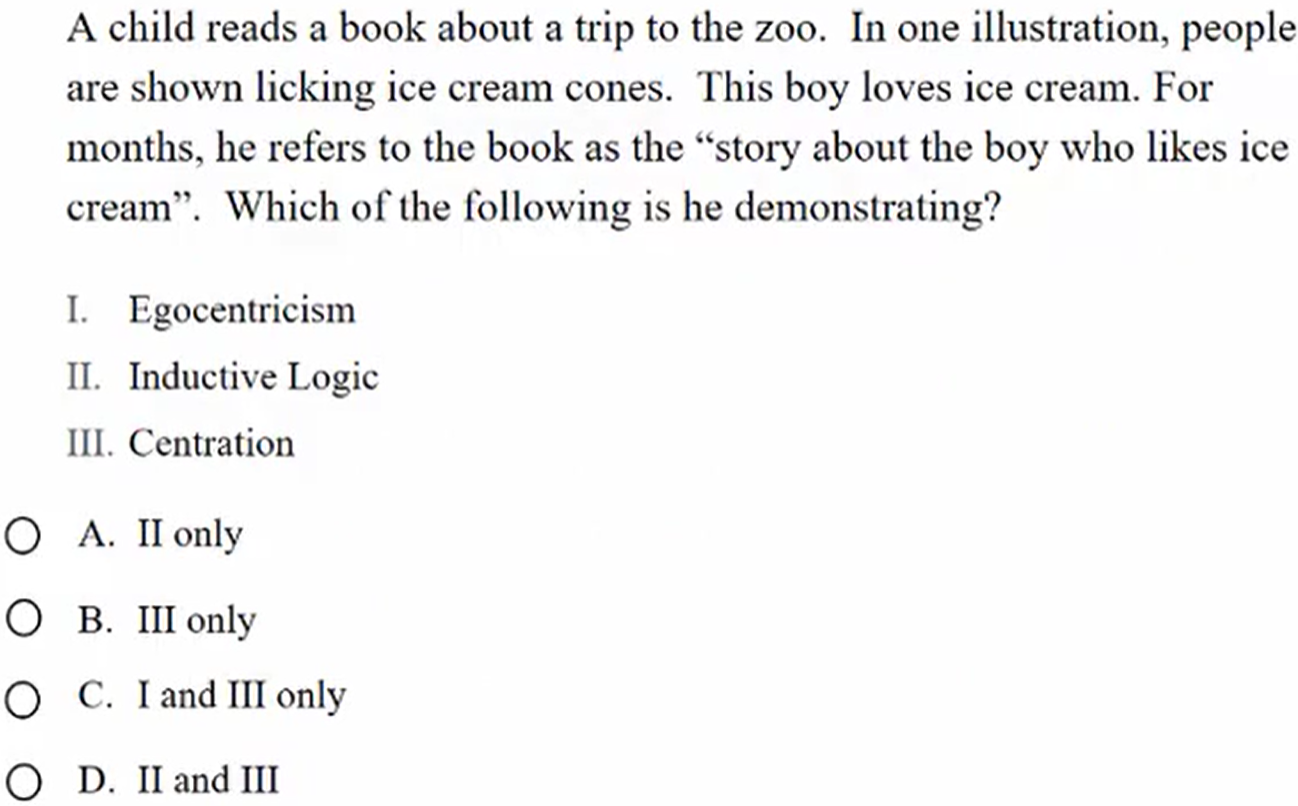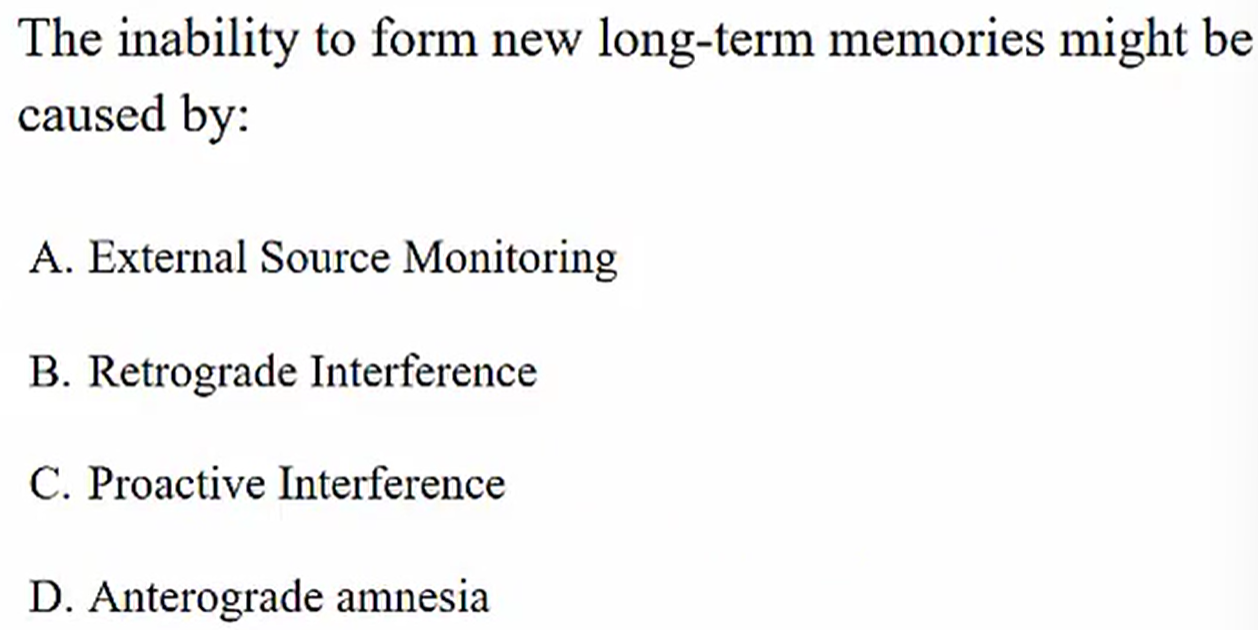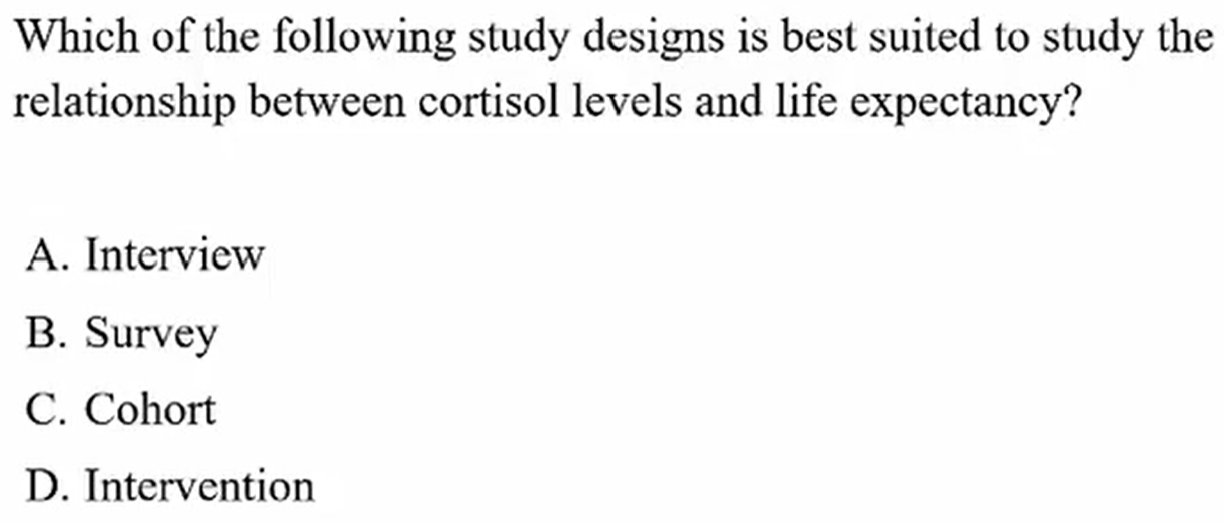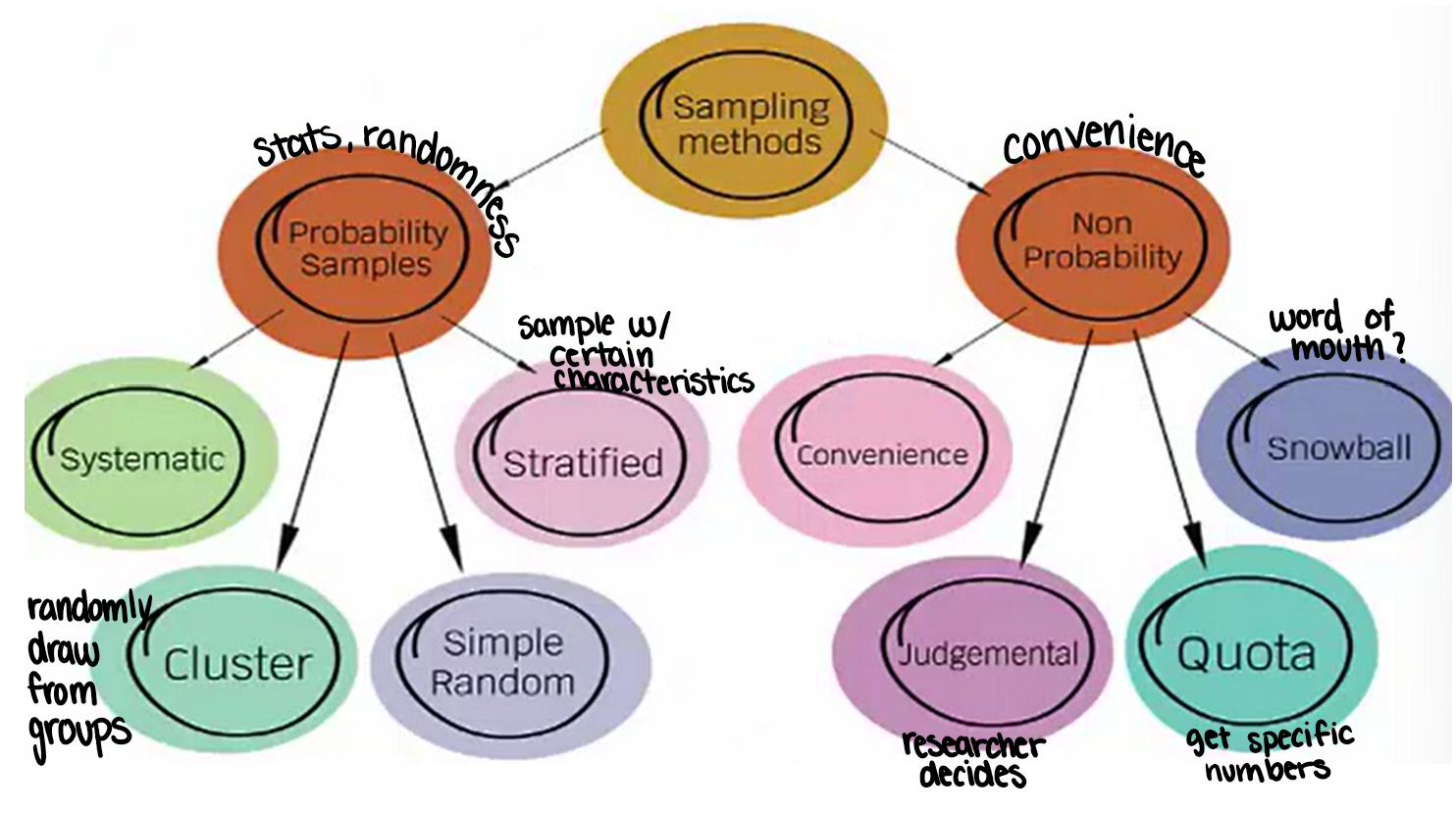MCAT Psychology
1/558
There's no tags or description
Looks like no tags are added yet.
Name | Mastery | Learn | Test | Matching | Spaced |
|---|
No study sessions yet.
559 Terms
Psychoanalytic Major Theorists
Sigmund Freud
Erik Erikson
Psychoanalytic Emphasis
Childhood experiences and unconscious mind shape personality
Psychoanalytic Major Experiments
Dream analysis, free association and projective tests
Psychoanalytic Buzzwords
Psychosexual stages: ID, Ego, Superego
Superego:
Incorporates the values and morals of society
ID:
Primitive and instinctive component of personality
Ego:
Develops in order to mediate between the unrealistic id and the external real world
Humanistic Major Theorists
Carl Rogers
Abraham Maslow
Humanistic Emphasis
A person is largely shaped by free will and personal growth, not extrinsic factors
Humanistic Major Experiments
Questionnaires
Client-therapist relationship studies
Humanistic Buzzwords
Free will
Self actualization
Maslow’s hierarchy of needs
Trait Major Theorists
Hans Eysenck
Trait Emphasis
Personality is made up of stable traits that are consisten across a wide range of situations
Trait Major Experiements
Factor analysis
Personality Inventory
Trait Buzzwords
Introversion/Extroversion
Big 5 Factors
Trait Big 5 Factors
OCEAN
Openness
Conscientiousness
Extraversion
Agreeableness
Neuroticism
Social Cognitive Major Theorists
Albert Bandura
Social Cognitive Emphasis
Learning is based on social observation and a persons response is situational
Social Cognitive Major Experiments
Bobo Doll
Major finding: children mimic violent behaviors of adults
Social Cognitive Buzzwords
Reinforcement
Reciprocal
Determinism
Environment
Biological Major Theorists
William James
Biological Emphasis
Personality is primarily influence by a persons genes
Biological Major Experiments
Twin Studies
Brain Scans
Biological Buzzwords
Inheritance
Physiology
Genetic Determinism
Behaviorists Major Theorists
Ivan Pavlov
B.F. Skinner
Behaviorists Emphasis
Behavior is shaped by conditioning and adaptation to the environment
Behaviorists Major Experiments
Pavlov’s Dogs
Skinner Box
Behaviorists Buzzwords
Classical Conditioning (stimulus/response)
Operant Conditioning (reward/punishment)
Jean Piaget Perspective
Engaged in clinical, developmental, and cognitive psychology
Jean Piaget Goal
Was interested in “genetic" epistemology”, the study of the origins of an individuals knowledge set
Jean Piaget Believed That:
Children develop logical reasoning through a series of stages (not incremental)
They cannot be compared to adults because their minds work in qualitatively distinct ways
When it comes to intelligence, the process of learning and reasoning are more important than the facts a person knows
4 of Piaget’s Stages of Cognitive Development
Sensorimotor (ages 0-2): Sensation is everything, becoming mobile
Preoperational (2-7): Preschoolers (+ 5, 6, 7)
Concrete Operational (7-12): Kids playing 4-square on concrete
Formal Operational (12-on): Teenagers might attend a formal dance at school
Sensorimotor (ages 0-2) Learn Through:
The 5 senses, manipulating objects, simple trial-and-error
Sensorimotor (ages 0-2) Important Skills To Develop:
Coordination
[Intentional] Imitation: not intentional until later infancy
Object Recognition
Object Permanence: understanding that people and other items still exist even when they’re out of sight
Preoperational (2-7) Learn Through:
Thinking relationally
Preoperational (2-7) Important Skills To Develop:
Symbolic Representation: A, B, C…
Egocentrism: difficulty taking another’s perspective
Animism: believing objects have human thoughts and emotions (usually their own thoughts and emotions)
Centration: focusing on one element of a situation or story at the time and ignoring the rest
Concrete Operational (7-12) Learn Through:
Inductive logical reasoning
Concrete Operational (7-12) Important Skills To Develop:
Conservation: quantitative reasoning
Classification: separating items by shared qualities and hierarchies
Reversibility: knowing things can be put back into an original state; able to count backwards
Seriation: ability to arrange objects according to quantitative value (age)
Formal Operational (12-adulthood) Learn Through:
Abstract thinking
Formal Operational (12-adulthood) Important Skills To Develop:
Deductive reasoning
Problem solving
Hypothetical scenarios
Constructing arguments
Metacognition: thinking about the process of thought, philosophical reflections
Piaget Criticism
Problematic research methods
Lack of interrater reliability
Some date came from studying his own 3 children
Preoperational children are better at perspective-taking than he described
Some mentally capable adults never reach the formal operational stage

C. I and III only
Egocentricism: the boy likes ice cream, so the character does too
Inductive Logic: found in concrete operational phase
Centration: focuses only on the ice cream
Need Definition
Person’s drive is related to the basic elements required for survival, such as water, food, or clothing
Incentive Definition
Positive or negative stimulus from the surroundings that can motivate the behavior
Drive Definition
Motivation
Instinct Definition
Fixed pattern of response to a particular phenomenon or situation
Memory Encoding
What types of information can be inputted by humans
Memory Storage
Where and how do we process the information we pay attention to
Memory Retrieval
What enables us to recognize and recall information that we once learned
What is Encoding
The initial process of memory encoding occur rapidly:
Stimuli → Sense Modalities → Thalamus → Hippocampus
Hippocampus decides if the info should be stored as memories
Input and storage
4 Types of Encoding and 2 “Complexes”
Basic Encoding
Visual, or Iconic: inputting pictures in mind
Acoustic, or Echoic: inputting sounds
Kinesthetic: inputting body sensations
Spatial: inputting a “sense of direction”
4 Types of Encoding and 2 “Abstract”
Abstract encoding relied on VAKS encoding but goes a step further
Semantic: encoding meanings, such as words
Elaborative: relies on semantic and VAKS. Attaching new information to preexisting memories based on meanings
Result in stronger memories that are easier to retrieve later
Semantic Network Theory
The idea that we encode new information by situating it among conceptual patterns we’ve already formed
A key process here is “spreading activation”: scanning our brain for memories to help explain new info
Once we find a particularly dense region of related concepts, we squeeze new idea into the network
Techniques that convert information into the storage unit more easily:
Chunking: easier to learn a few thing clumped together than longer strings of distinct themes
Mnemonics: memorize patterned ways of inputting information
Context-Dependent Learning: more likely to retrieve memories if we inputted that memory in the same environment we were when the memory was formed
State-Dependent Learning: when intoxicated it’s harder for memories to be encoded and retrieved and conduct elaborate performances
Mood can help you remember things from the last time you felt that emotion
Serial Position Effect: have better recall for information that was encoded in the earliest and latest stages of a series
Self-Reference Effect: encode things more effectively if we relate them to ourselves as we’re learning it
Spacing Effect: better at recalling information if we input that information over a longer period of time
Memory Storage
Sensory Memories (1-2 sec)
Working, or Short-Term Memories (30 sec)
Long-Term Memories (indefinite)
Sensory Memories
Only last 1-2 seconds and provide a sense of continuity to our experience
Without sensory memories, our actions and awareness would be extremely disjointed
Sensory → Short-Term Memory
If information makes it past the sensory memory, it becomes a short-term memory
Memory Storage
Short-Term Memory: also called “working memory”
Lasts 15-30 seconds
Characteristics of Short-Term Memories
Limited in capacity (max of 4-9 items can be stored in working memory)
Limited in duration (15-30 seconds before decay)
Primarily acoustic (when using our STM, we tend to mutter or hear a voice in our mind)
Vulnerable to distractions (startled by doorbell ringing)
Long-Term Memories
Short-term memories become long-term memories through various kinds of REHEARSAL
The memory moved from the hippocampus (seat of STM) to neocortex (seat of LTM)
Long-term memories can last indefinitely if the brain isn’t damaged
Broadbent’s Filter
Says stimuli is selectively attended to and processed at varying levels of depth
Not necessarily conscious
Each type of memory is like a funnel for the next
There are types of STMs and LTMs that form in parallel, not sequentially
Processes that convert memories
Sensory Memories → Working (ST) Memories via Selective Attention → Long-Term Memories via Rehearsal
Types of Long-Term Memories
Implicit Memories
Procedural
Explicit Memories
Episodic
Semantic
Implicit Memories
Skills we know but can’t easily articulate
Procedural: “muscle memory”
Explicit Memories
Also called Declarative Memories
Episodic: stories
Semantic: information
Memory Retrieval Definition
The process of converting data from the memory into active consciousness
2 Levels of Memory Retrieval
Recognition: coming across an item and realizing you have encountered it before
Recall: being able to conjure memories into awareness (more involved than recognition)
Eidetic Memories (Photographic)
The ability to recall accurate visual/iconic memories after brief encounters w/ an original scene or object
Most children lose it by 6-7 years of age
Language and abstract thinking can interfere with the visual acuity of memories
Serial Recall
People recall information best in the same order that something occurred
Serial Position Effect
When people memorize a list of items and are later asked to recall, they most easily recall the first and last few items (forget the middle)
Cued Recall
People have better recall when they learn information in patterned ways and are given a hint about the pattern
Retrieval Difficulties Common Causes
Shallow Processing of Information
Certain Drugs
Sleep Deprivation
Stress of Trauma
Brain Damage
Aging
Shallow Processing of Information
Memories are more resilient when they’re rehearsed over time with plenty of semantic and elaborate encoding
Certain Drugs
Many drugs inhibit memory formation and retrieval while high
Long-term difficulties:
Strongly linked to high quantities of alcohol and nicotine
Somehow linked to high quantities of benzos and opioids
Potentially linked to high consumption of cannabis, other hallucinogens, cocaine, and methamphetamines
Sleep Deprivation
Sleep strengthens synaptic connections in the hippocampus
REM sleep strengthens procedural memories
Non-REM sleep strengthens declarative memories
Stress of Trauma
Trauma strengthens some memories via amygdala involvement but also diminishes retrieval of other memories
Brain Damage
Injuries and neurodegenerative conditions damage parts of the hippocampus and cortex that process and house memories
Anterograde amnesia: not being able to retrieve memories that were formed after the damage occurred
Retrograde amnesia: forgetting what occurred before damage, especially immediately before
Aging
Diminished circulation in brain; exercise can assist memory processing and retrieval
Hormonal changes, especially higher cortisol levels
The cortex begins shrinking around age 30, although memory problems don’t begin until most people are in their 40s
Neurons in the hippocampus shrink or atrophy
Pathways to the hippocampus become damaged
Tip-Of-The-Tongue Phenomenon
The partial recall of an item accompanied by the feeling that you are on the brink of fully retrieving it
Becomes more frequent after age 40
Mid-60s: harder to recall information than it used to be
This is the same age range (40s-60s) when vision and hearing begin to decline
Memory Interference
Retroactive Interference: difficultly recalling an older memory because you have memorized a similar item more recently
More prone in young people
Proactive Interference: difficulty to recall new memories because a similar but older memory is more firmly entrenched
More prone in older adults
Source Monitoring
Attributing a memory to a particular source, whether correctly or not
Can be internal or external
People’s assumptions about the source of a memory are often wrong
The mistakes often reflect preexisting biases and attitudes
As people age, their source monitoring contains more errors

D. Anterograde Amnesia
External Source Monitoring
Remembering where the memory came from
Differentiating among external events
Internal Source Monitoring
External world vs your own mind
Descriptive Research
Reports details about populations/situations
Quantitative: numerical descriptions, statistics
Qualitative: direct quotes, vignettes, ethnographics
Methodologies: archival records or media, observational, interviews, focus groups
Survey Research
Administration questionaries (written, spoken, digital)
Open-ended: answers are descriptive/narrative
Close-ended: multiple choice, yes/no, check boxes, Likert scales
Correlational Research
Measuring two or more variables and assessing statistical relationships
Case Control: two or more groups are compared retrospectively to investigate potential causes
Cohort Research: a longitudinal study where a group of people is followed across time
Intervention Research
Researchers manipulate an independent variable and one or more dependent variables are measured
Experiments, quasi-experiments

C. Cohort
“Life expectancy” indicates researching dead people (so no interview/survey)
Cohort studies people over years
Intervention Research Definition
A parameter is manipulated by researchers (IV) and the effect is observable on other conditions (DV)
Intervention Research Steps
Make Observation
State Problem
Identify Variables
Formulate Hypothesis
Design Experiment
Collect Data
Draw a Conclusion
Intervention Research Benefits
Provides evidence about causal properties of the IV
Results of study can be duplicated
Intervention Research Drawbacks
Expensive and time consuming
Many aspects of health can’t be manipulated
Intervention Research Goal
To isolate the IV while holding other variables steady
Facilitated by:
Control groups
Sampling
Random assignment
Blinding
Control Groups
Researchers run two or more parallel simultaneous experiments: a treatment group (subjected to the manipulated IV) and control group
Negative Control
The control group is exposed to all the experimental conditions except the treatment; sometimes placebos are given
Positive Control
The control group is exposed to an alternate treatment that is already known to have an effect on the dependent variable
Sampling

Selecting the group that you will actually collect data from in your research
Probability Sampling
Uses statistics to recruit
Systematic: selected at intervals
Clusters: population is divided into groups that get randomly selected
Simple Random: all names in the pool, researchers randomly draw X many
Stratified: people divided into demographic groups; names randomly drawn from those)
Non-probability Sampling
Convenience sampling: first come, first serve
Judgmental: researchers hand pick participants
Quota: sample is curated to include specific proportions of demographic characteristics
Snowball: participants recommend people they know to the researchers to serve as additional participants in the study